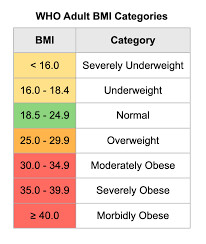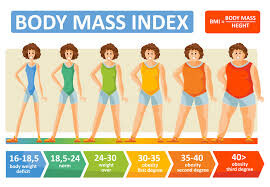Running News Daily
Running News Daily is edited by Bob Anderson. Send your news items to bob@mybestruns.com Advertising opportunities available. Train the Kenyan Way at KATA Kenya and Portugal owned and operated by Bob Anderson. Be sure to catch our movie A Long Run the movie KATA Running Camps and KATA Potato Farms - 31 now open in Kenya! https://kata.ke/
Index to Daily Posts · Sign Up For Updates · Run The World Feed
BMI Is a Controversial Measure of Health Outcomes—a New Study Suggests a Better Method
It’s not all about height and weight.
New research suggests incorporating waist circumference into how we predict health outcomes, instead of relying on BMI.


Study authors say BMI does not take into account muscle mass or the links between abdominal fat and poorer health, among other downfalls of the measurement.
In an effort to understand how body composition affects health, most medical professionals and researchers still use the body mass index (BMI), but this has always been a problematic and controversial method when actually applied to individuals, rather than large populations. For example, commentary in the British Journal of General Practice, published back in 2010, called use of BMI unethical, overly simplistic, and potentially harmful to a significant proportion of patients.
A new study in JAMA Network Open assessed a possible pivot toward a different measurement tool: the body roundness index, or BRI. In addition to weight and height (which is all that the BMI includes), the BRI considers waist circumference because that can more comprehensively reflect visceral fat distribution, according to the study’s lead author Xiaoqian Zhang, M.D., at Beijing University of Chinese Medicine in China.
In the cohort study involving nearly 33,000 U.S. adults, researchers looked at the association between an increase in BRI from 1999 to 2018 and the significant rise in all-cause mortality (particularly cardiometabolic disease, kidney disease, diabetes, and cancer) during the same period.
More abdominal fat has been linked to higher risk of these conditions because this type of fat is often visceral, which means it wraps around your organs instead of sits just under the skin. That means it can increase inflammation and drive more chronic diseases, Zhang told Runner’s World. For example, one study of Korean adults found those with normal body mass index had more cardiovascular risk factors if they carried excess abdominal obesity.
“Because of the way it includes waist circumference, BRI effectively provides a more accurate indication of health problems related to being overweight or underweight,” Zhang said. “We found both the lowest and the highest BRI values are associated with significantly increased risks of all-cause mortality.”
The Problem with BMI
Considering a switch away from BMI involves understanding why this effort matters. BMI was not meant to be used on an individual level. It relied only on Belgian men (because it was a formula devised in the 1830s by a Belgian mathematician) and did not take women and/or non-Caucasians into account, the British Journal of General Practice authors noted. As other researchers note, it was also not meant to inform medicine or predict health outcomes
By looking only at height and weight, the BMI might measure general obesity but it doesn't distinguish body fat from muscle mass, said the recent study’s co-author Wenquan Niu, Ph.D., at the Center for Evidence-Based Medicine in China. Because of this, for example, many bodybuilders are classified as obese.
“Fat distribution and body composition can vary dramatically among individuals who have the same BMI,” he told Runner’s World. “That’s why we need a more accurate indication of health problems related to overweight or underweight. Using the BRI is more helpful for this, given the limitations of the BMI metric.”
What to Know About Waist-to-Hip Ratio
The BMI and BRI are not the only possibilities when it comes to body composition. One that’s easy to measure at home is hip-to-waist ratio (WHR), which involves measuring both of those and then dividing your waist number by your hip number. According to a study published in JAMA Network Open in 2023, the ideal ratio for most men is below 0.95 and under 0.85 for women.
Even if you’re physically active and are not overweight, the WHR can help identify your risk of future metabolic issues, because abdominal fat plays a significant role in issues like insulin resistance and hypertension, according to Vitor Engrácia Valenti, Ph.D., a researcher at Sao Paulo State University in Brazil who has done work on body composition.
“The BMI calculation is far less helpful than your WHR, which can give you an indication of whether your waist circumference is outside the normal range,” he told Runner’s World.
Other indicators of body composition are lean muscle mass and fat mass, but those require specialized equipment such as a DXA scan for accurate numbers, Valenti added.
In general, the goal shouldn’t be reducing body fat as much as possible—you do need body fat for overall health—but to focus on reduction of abdominal fat in particular.
Although “spot training” for this type of fat is not a possibility, a systematic review and meta-analysis published in Advances in Nutrition looked at 43 studies focusing on training styles and their effects. Researchers found that although aerobic exercise tends to produce slightly greater efficacy in decreasing belly fat, the biggest change comes when it’s combined with resistance training.
by Runner’s World
Login to leave a comment




